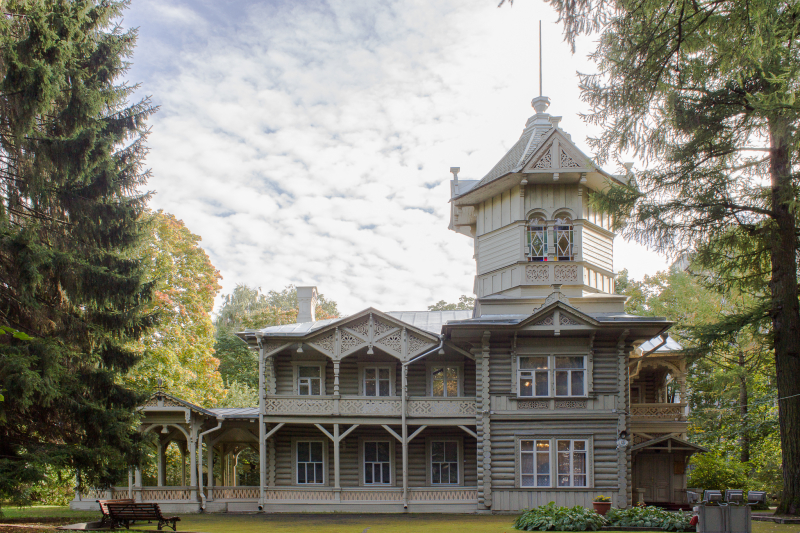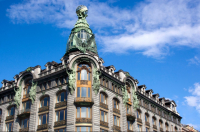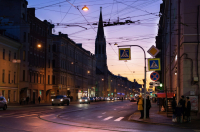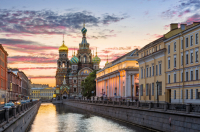Petrogradskaya Side
Now one of the most sought-after districts for living, until the early 20th century “Petrogradka” was a remote area of St. Petersburg filled with country houses (dachas) and gardens. The construction of the permanent Trinity Bridge brought a new life to the island, and soon, the wooden dachas were pressed against revenue houses. Nevertheless, that’s where you can find the most abundant and well-preserved wooden architecture in the city center.
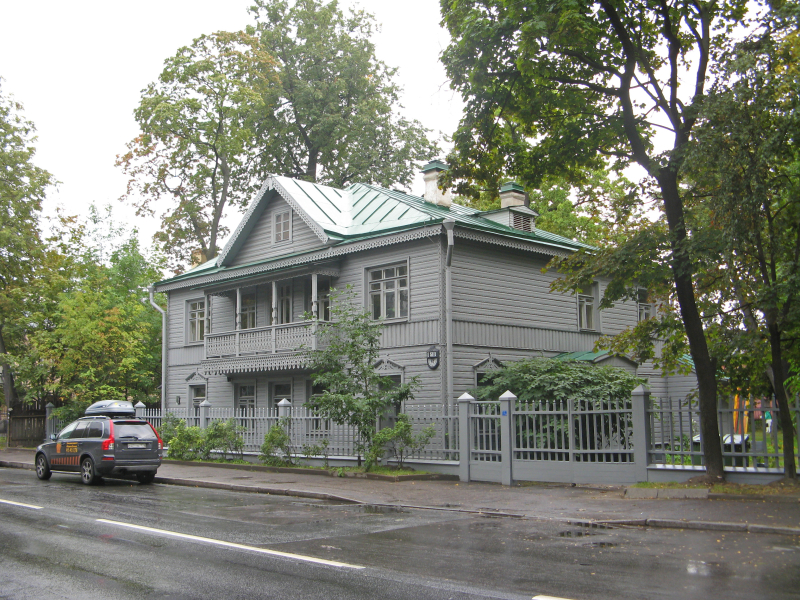
Mikhnevich House. Ekaterina Borisova, CC BY-SA 4.0, via Wikimedia Commons
If you’d like to explore a wooden house to the full extent, head to Popova St. 10. This monochrome two-storey building with carved platbands and a balcony is the Mikhnevich House. Built in the 1850s, it changed hands multiple times throughout its history. In 1912, it became home to the famous avant-garde painter Mikhail Matushin and his wife Elena Guro. From 1912 and until 1923, it was a hotspot for the city's avant-garde community. Today, it’s the Museum of St. Petersburg Avant-garde.
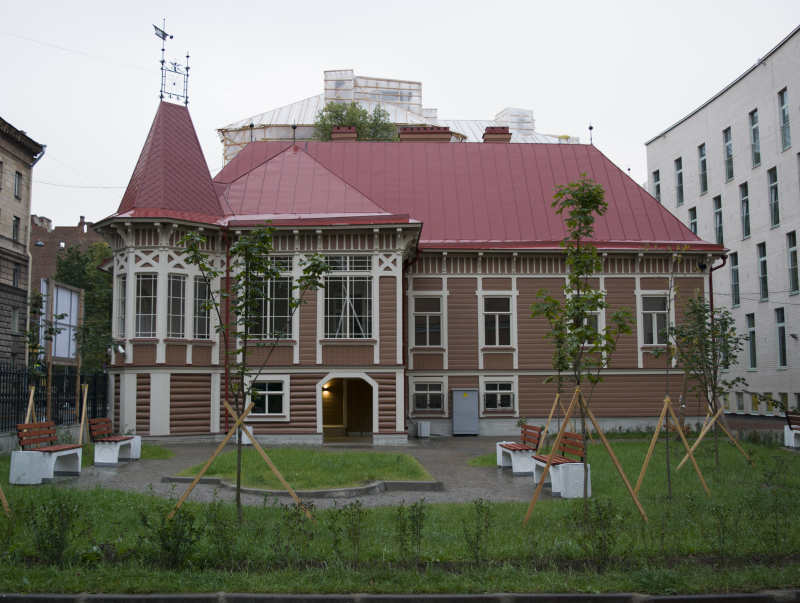
Dobbert Mansion. Nikita Lukanovsky, CC BY-SA 4.0, via Wikimedia Commons
Another remarkable example is located within walking distance of the ITMO Kronverksky campus. Restored and neat, the Dobbert Mansion (also known as Greff Mansion) on Bolshaya Pushkarskaya St. 14 is part of the Boris Eifman Dance Academy. In the Soviet era, it served as a kindergarten for a long time.
Originally a classical building, in 1894 it was renovated for the doctor’s wife Julia Dobbert, featuring an eclectic style that includes a faceted bay window and a tower with a hipped roof. Take a closer look so you don’t miss the intricate details on the tower’s tops, such as a forged spider's web and a bouquet of flowers.
Strolling through the cozy Lopukhinsky Garden with a mesmerizing view of the Malaya Nevka River, you’ll come across the Gromov Country House. This two-story log house was erected for the timber merchant Vasily Gromov and stands as a fine piece of early eclecticism incorporating classical motifs. In the past, there was a boat station, a summer theater, and a Pioneer house here. In 2015, it underwent restoration and now adds to the garden’s charm with its original appearance.
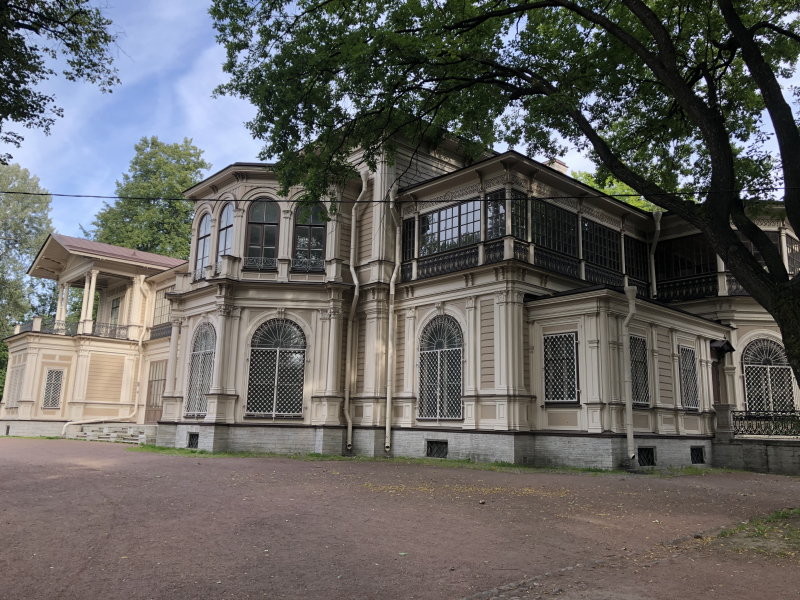
Gromov Country House. Книжная пыль, CC BY-SA 4.0, via Wikimedia Commons
On Petrovskaya Embankment 6, you’ll discover one more wooden structure of distinctive historical significance: the Cabin of Peter the Great is the very first building in St. Petersburg. Now protected by a brick frame, this wooden edifice has been transformed into a museum showcasing the belongings of Russia’s first emperor.
Vyborgsky District
Near the Ploshad Muzhestva metro station stands the Bertling Country House. Surrounded by gray multi-story constructions, it exudes grace with its intricate carvings, arcaded balconies, and faceted tower. The house acquired its current appearance in the early 20th century, when the land was bought by Heinrich-Friedrich Bertling, director of the board of the Singer company. It's also where the decision was made for the October revolution. Today it accommodates the Children's Museum Center for Historical Education, a branch of the Museum of Political History of Russia. Visitors can get inside to see the exhibits and interiors with a guided tour or during the upcoming Night of Museums on May 18, 2024.
Follow this tag to discover more architectural gems of St. Petersburg.
